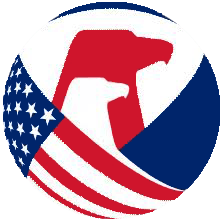Product Hazards – Toys

Play is a huge part of children’s lives and aids in improving children’s abilities to plan, organize, get along with others and regulate emotions. Yet, many toys contain hidden hazards for children and they have been related to far too many injuries. However, toy safety has improved vastly over time. Toys had consistently been the top product type recalled by the CPSC, but in 2016 it was third (behind clothing and nursery products) and this continues to be true in 2022 as well. Children can be hurt by unsafe toys in many ways, including falls, choking, strangulation, burns, drowning, and poisoning. A CPSC report shows that in 2022 there was an estimated 79,700 toy-related emergency room treated injuries for children under the age of 4 between 2012 and 2022. Make playtime fun, safe, and enriching for your little ones with these tips:
Toy Tips to Keep Kids Safe
Check for recalls on the CPSC recalls page. Visit SaferProducts.gov to see if there have been any recent incidents with purchased items.
Check toys often for hazards like loose parts, broken pieces or sharp edges, and repair or discard any weak or broken toys. Report any hazards to SaferProducts.gov.
Read and follow the age label, warnings, safety messages and assembly instructions for the toy. Age guidelines are given for safety reasons and should not be ignored even if your child seems advanced for their age.
Avoid buying small toy parts for young children. Young children can choke on small parts of toys or games. A common rule of thumb is that if a part of a toy fits inside a toilet paper roll, then it’s not suitable for a child under 3 years.
toys with small batteries (button or lithium coin) or high-powered magnets can cause serious injury or death if ingested. Toys that meet standards should have protective compartments for batteries and not include small magnets. Check toys often for loose parts. Don’t buy products on questionable online sites and look for verification that they meet the US toy standard.
Designate locations for toys. Put toys in a designated location to keep toys meant for older kids out of reach of the younger children.
Electric toys should be “UL Approved.” Check the label.
Do not buy water beads. These dangerous products are made of small super-absorbent polymers that can grow up to 1,500 times their size when placed in liquid. If ingested, the beads absorb bodily fluids and can lead to potentially life-threatening injuries, such as intestinal or bowel obstruction.
Design Safety Toolkit
If you’re a toy designer or just want to learn what makes toys safe, take the KID Design Safety Toolkit, a free online course on designing hazards out of toys before they’re put on the market. (There is a special module just on play!).
More Information on Toy Safety
- ToySafety.net is a project of the National Association of State Public Interest Research Groups (PIRGs). The information contained on this site was researched and compiled by state PIRG staff across the country and published in the state PIRG’s annual Trouble in Toyland Report.
Report an Injury or Incident to SaferProducts.gov
Do you have a product injury or incident to report? Use the button below to contact
SaferProducts.gov and help other people avoid similar experiences.

